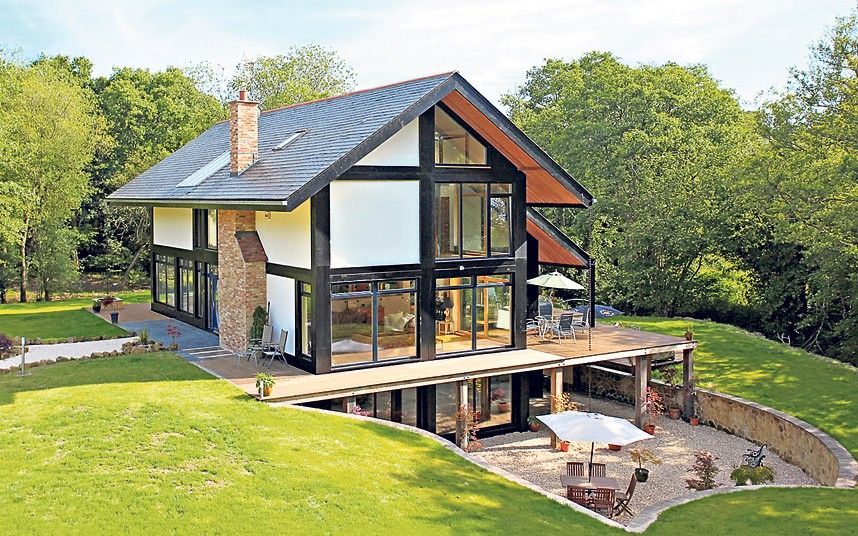

Making your home more environmentally friendly is not just a trend – it’s a responsibility we all share in protecting our planet for future generations. Let’s learn more about this topic below with Dinosaur Game as we explore practical ways to transform your living space into an eco-conscious haven that benefits both the environment and your wallet.
Creating an eco-friendly home environment goes beyond simply recycling or using energy-efficient light bulbs. It encompasses a holistic approach to sustainable living that considers everything from the materials we use in our homes to the way we consume energy and water. By making conscious choices about our living spaces, we can significantly reduce our carbon footprint while creating healthier living environments for ourselves and our families.
The transition to an eco-friendly home doesn’t have to happen overnight. Small, incremental changes can lead to substantial environmental benefits over time. Moreover, many eco-friendly home improvements can result in significant cost savings through reduced utility bills and improved energy efficiency. These changes often increase your property’s value while contributing to a more sustainable future.
Read more: Top 5 DIY Wall Art Projects for Beginners
One of the most impactful ways to make your home more eco-friendly is by focusing on energy efficiency. Start by conducting an energy audit to identify areas where you’re losing heat or cooling. Common issues include poorly insulated windows and doors, inefficient HVAC systems, and outdated appliances. Installing weather stripping, updating insulation, and sealing air leaks can dramatically reduce your energy consumption.
Consider upgrading to smart home technology that helps monitor and control energy usage. Smart thermostats, for instance, can learn your schedule and automatically adjust temperature settings to optimize energy consumption. LED lighting with motion sensors ensures lights aren’t left on unnecessarily, while smart power strips can eliminate phantom energy drain from electronics when they’re not in use.
Water conservation is crucial for maintaining an eco-friendly home. Installing low-flow faucets, showerheads, and toilets can significantly reduce water consumption without sacrificing performance. Consider collecting rainwater for garden irrigation and installing a gray water system to reuse water from sinks and washing machines for non-potable purposes.
Regular maintenance of plumbing systems is essential to prevent leaks and waste. Simple habits like fixing dripping faucets promptly and running full loads in dishwashers and washing machines can save thousands of gallons of water annually. Native landscaping and drought-resistant plants can also help reduce outdoor water usage while maintaining an attractive yard.
When renovating or decorating your home, choose sustainable materials that have minimal environmental impact. Look for furniture made from reclaimed wood, bamboo, or other renewable resources. Consider products with recycled content and low VOC (Volatile Organic Compounds) emissions. These choices not only benefit the environment but also contribute to better indoor air quality.
Opt for natural, non-toxic cleaning products and materials throughout your home. This includes everything from paint and flooring to textiles and storage solutions. Many eco-friendly alternatives are now readily available and perform just as well as their conventional counterparts while being better for both the environment and your health.
Implementing an effective waste management system is crucial for an eco-friendly home. Set up clearly labeled recycling stations and composting systems to make it easy for family members to sort waste properly. Consider creating a dedicated space for storing recyclables until they can be properly disposed of or processed.
Composting organic waste not only reduces landfill burden but also creates nutrient-rich soil for your garden. Many kitchen scraps, yard waste, and paper products can be composted. Some communities even offer municipal composting programs or provide discounted composting bins to encourage this practice.
Maximizing natural light and ventilation can significantly reduce your home’s energy consumption. Strategic placement of windows, skylights, and light tubes can illuminate your home during daylight hours without relying on artificial lighting. Consider installing solar tubes in darker areas of your home to bring in natural light without the cost and complexity of traditional skylights.
Proper ventilation is essential for maintaining good indoor air quality while reducing the need for artificial cooling. Installing ceiling fans, operable windows, and ventilation systems can help create comfortable indoor temperatures naturally. Consider the direction of prevailing winds when planning ventilation strategies for your home.
Read more: Small Space Living: Smart Storage Hacks That Work
Investing in renewable energy solutions like solar panels can significantly reduce your home’s environmental impact while providing long-term cost savings. Modern solar systems are more efficient and affordable than ever, with various financing options available. Even if full solar installation isn’t feasible, consider solar-powered outdoor lighting or small-scale solar applications.
Other green technologies to consider include geothermal heating and cooling systems, energy recovery ventilators, and smart home energy management systems. While these investments may have higher upfront costs, they often pay for themselves through reduced utility bills and increased home value.
Creating an eco-friendly home is an ongoing process that requires commitment and consistent effort. Regular maintenance of eco-friendly systems and updates to more efficient technologies as they become available helps ensure your home continues to minimize its environmental impact. Educate family members about the importance of sustainable practices and make it easy for them to participate in eco-friendly behaviors.
Stay informed about new developments in sustainable home technology and practices. Join local environmental groups or online communities focused on sustainable living to share ideas and learn from others’ experiences. Remember that every small action contributes to the larger goal of environmental protection.
Transforming your home into an eco-friendly space is a rewarding journey that benefits both the environment and your quality of life. By implementing these strategies and maintaining a commitment to sustainable living, you can create a comfortable, healthy living space while reducing your environmental impact. Start with small changes and gradually incorporate more sustainable practices as you build momentum toward a greener lifestyle. The investment in eco-friendly home improvements will pay dividends in reduced utility costs, increased property value, and the satisfaction of knowing you’re contributing to a more sustainable future.